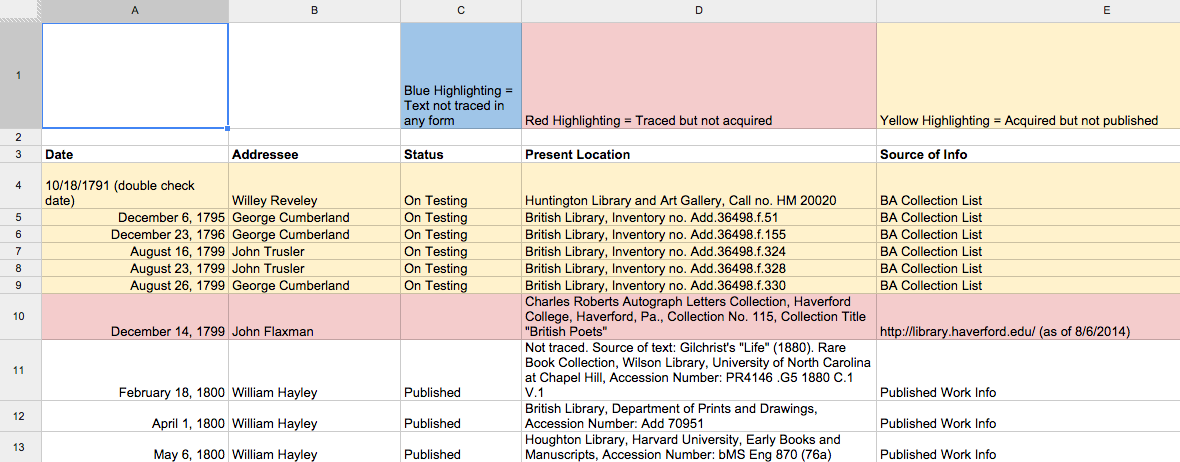I’ve written before about my ongoing project of compiling a “master list” of the present locations for all of Blake’s correspondence. To collect all of this data, I’ve scoured a tall stack of fat books and a lot of online catalogues. The baseline for this list is the work info that we’ve already verified on the Blake Archive: both for letters that we’ve published and for those that are on deck for publication. Locating the rest of the letters has taken (and is still taking) some hunting around.
Sometimes, this is a quick process: past print editions of Blake’s letters or past catalogues pin a letter’s location down to a specific library. Ideally, the online catalogue for the library in question is complete and easy to navigate, and I simply confirm that the letter is still there. Other times, it’s not so simple.
This week, the editors at the Blake Archive had a routine email back-and-forth about locating a specific Blake document: the 11 December 1805 letter from Blake to William Hayley. According to the last print catalogue of Blake’s works, the letter should live in a collection donated by the Keynes Family Trust to the Fitzwilliam Museum. But, upon trying to locate it recently, it doesn’t appear to be there.
After combing through every account I could find of the letter’s whereabouts (including G. E. Bentley’s massive online bibliography of all things Blake) the account of the letter’s location changes over time: in the earliest account, the letter was definitely in Geoffrey Keynes’s collection, which was donated to the Fitzwilliam Museum. A later account corrects the phrasing, saying that the letter is “presumably” with that donated collection. The most recent attempt to locate it reports that the letter is neither with the family that donated the collection, nor in the collection itself.
Hopefully, the letter is only temporarily misplaced–not truly lost or untraced. The goal of this list is to figure out the present location–or at least the last known whereabouts, as in this case–of any given letter written by or to William Blake. And even when we don’t know where that is, the final list will provide the most up-to-date provenance, so that we don’t have to duplicate the sometimes tedious process of figuring out exactly where a letter lives.

